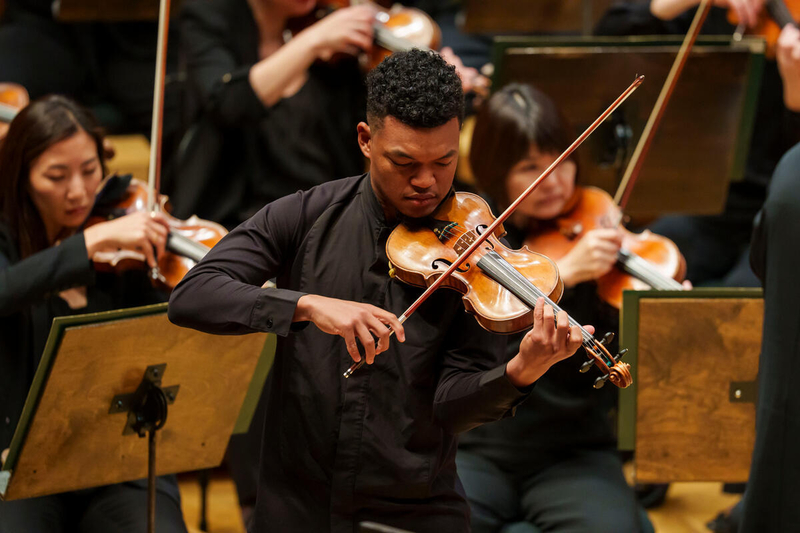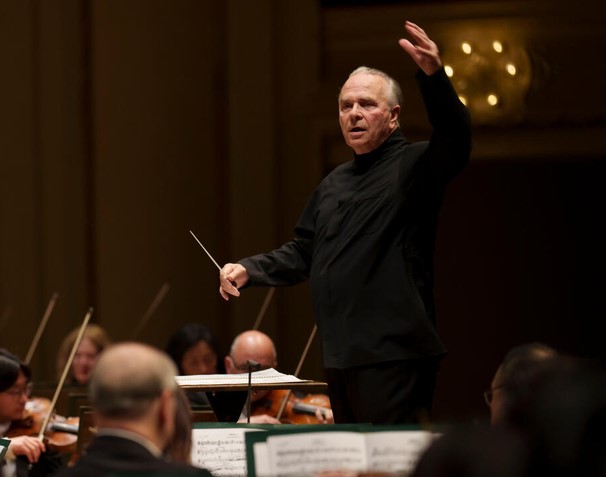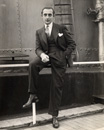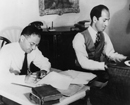Reviews
Goosby Brings Price to the Chicago Symphony
CHICAGO—It’s become one of the most frequently repeated stories in classical music. In 1933, Florence Price became the first Black woman to have a piece played by a major American symphony orchestra—the Chicago Symphony.
But the postscript, too easily glossed over, is a whole lot more complicated. In the decades that followed, the CSO never played another work of Price’s, despite her best efforts. Her renaissance has been underway for the last decade or so, but the CSO has mostly followed rather than led it, playing her music again for the first time in 2021.
The resurgence in interest has been further ignited by the discovery, in 2009, of several scores thought to be lost, in Price’s summer home in St. Anne, IL. Among them was her Violin Concerto No. 2, receiving its CSO premiere last week (June 5) with soloist Randall Goosby and conductor Sir Mark Elder. (Before it was lost, the concerto was premiered posthumously with piano accompaniment in 1964, at the grand opening of the now-defunct Florence B. Price Elementary School on Chicago’s south side.) Goosby was a natural choice to broker the introduction. The 28-year-old soloist has recorded and concertized most of Price’s surviving violin works, which helped launch the Juilliard grad’s career out of the pandemic.

Randall Goosby performing Florence Price's Second Violin Concert with the Chicago Symphony Orchestra
Shorter than its predecessor, Price’s second concerto clocks in at just over 15 minutes and lands somewhere between sonata form and fantasy. Having composed the piece a year before her death, in 1953, Price seems to have inched past her usual tonal, tuneful idiom to explore new ground. The solo line is extravagantly lacy, the harmonic path underfoot both roving and unpredictable. The stentorian chords that announce the concerto—the closest thing to a theme—return to demarcate new passages. (That includes a brief coda which, unfortunately, Elder egged on just enough to throw off the orchestra on Thursday.)
Goosby’s sound is luscious and rich, rather in the vein of his mentor Itzhak Perlman. But he also isn’t afraid to roll up his sleeves and get his hands dirty. Price indicates a repeated scuttling passage to be scrubbed out at the frog; Goosby obliged with an intentionally naturalistic scratchiness, as though nodding to the extended techniques being explored contemporaneously by other composers of the time.
The CSO augmented Goosby’s palette nicely. The woodwind choir often sounded like a tree teeming with chirruping birds. Later, CSO strings played with a delicate, wafting sound in Goosby’s own arrangement of Price’s Adoration, originally for organ. At one point, principal cello John Sharp came to the fore for a moment of lyrical interplay with Goosby. Already meltingly tender, the pocket-sized encore was sweetened further by a poised and tasteful performance.

Sir Mark Elder conducting the Chicago Symphony Orchestra
Though the Price was the evening’s shortest piece, Elder, touchingly, seemed to dote on it: Ending snafu aside, his direction was expressive and enunciated. The rest of the program, however, didn’t fare quite so well. Jostling convention, the program opened with a symphony: Prokofiev’s Seventh, which, astonishingly, the CSO has not played since the 1980s.
Alas, this exquisitely scored and paced gem hardly glittered in Elder’s straight, sometimes stoic interpretation. Not much was made of transitions, drained of their emotional impetus. Even the soaring theme in the first movement section trudged. Whimsical touches, like the perky xylophone in the Andante espressivo, were more or less skated over, and both the bombastic end of the Allegretto and the return of the principal melody in the finale—now lofted by gusty arpeggios—felt unearned.
To finish, Elder brought his own suite of Wagner’s Die Meistersinger von Nürnberg to the CSO stage—one with minimal editorial interventions, save a slightly clumsy, seesawing segue between “Procession of the Meistersingers” and the Act I prelude.
Still, this wasn’t exactly a probing or profound Meistersinger. Like the Prokofiev before it, ethereal moments stayed curiously earthbound. Bigger phrases didn’t carry over spacious expanses—which, occasionally, errant violins stepped in. A more interpretive vision might have assisted with the ensemble unity.
Even without the spark of inspiration, a well-preened CSO at least kept the ensemble sound glossy, if not always pristine in the horns and low brass. Trumpeter Tage Larsen, sitting principal for this concert, brought a mild, pillowed sound to his features here as well as in the Price. So did Anne Bach, covering the Prokofiev’s English horn solos.
Besides Goosby’s appearance, the second-most exciting thing to happen at this concert was Elder’s reconfiguration of the orchestra, with split violins and basses upstage right. (The last guest conductor to split the violins was Christian Thielemann, in fall 2022; meanwhile, former CSO Music Director Daniel Barenboim and Principal Conductor Emeritus Pierre Boulez preferred placing the violas on the outside.) The resulting sound was less rounded and more delineated in this configuration—less compelling in the Wagner, but an asset in the Prokofiev, with its volleying figures between first and second violins. In moments like this, the CSO played with a whetted alertness, no doubt listening actively to one another in the new configuration. For all its mixed qualities, this concert served as a reminder that changing things up—whether logistically or through expanding the canon—can be a risk worth taking.
Photos by Todd Rosenberg
Classical music coverage on Musical America is supported in part by a grant from the Rubin Institute for Music Criticism, the San Francisco Conservatory of Music, and the Ann and Gordon Getty Foundation. Musical America makes all editorial decisions.





 FEATURED JOBS
FEATURED JOBS

 RENT A PHOTO
RENT A PHOTO


